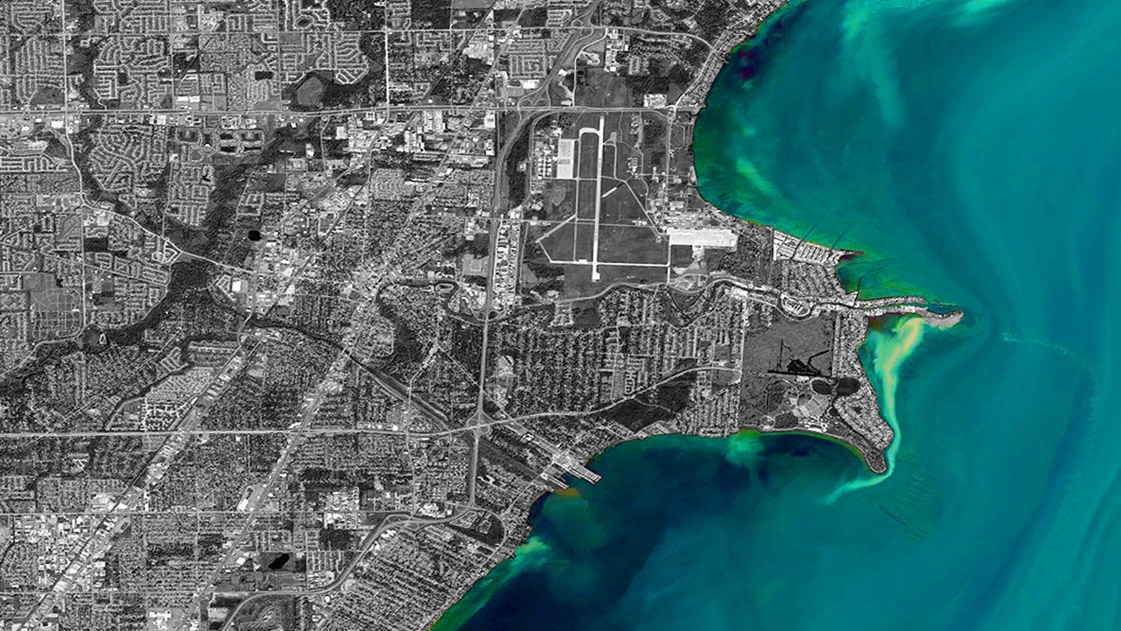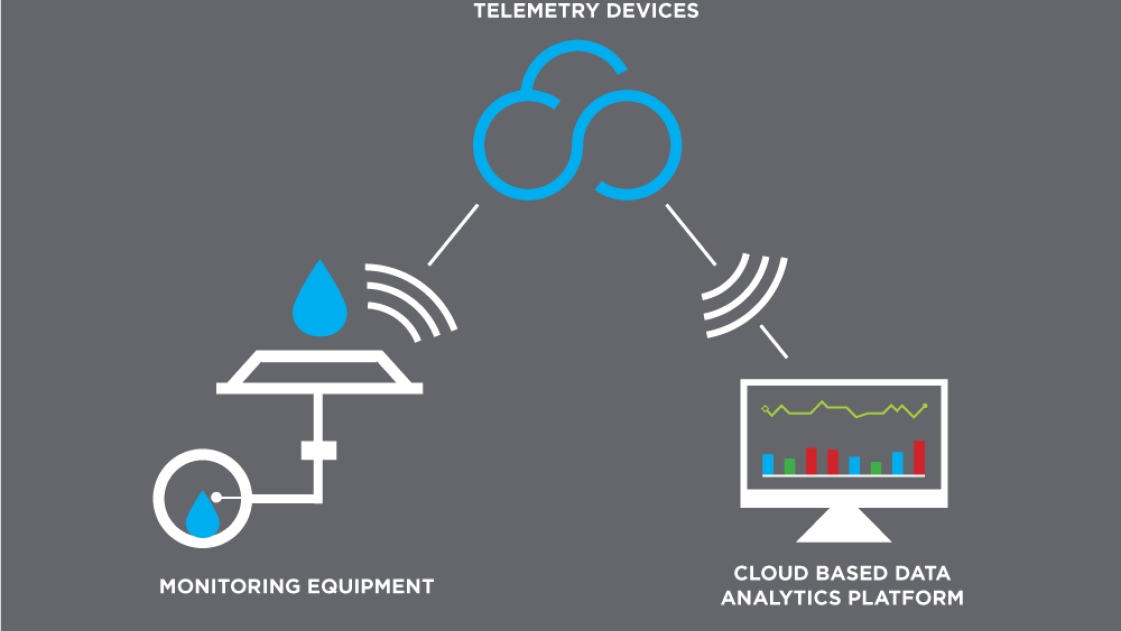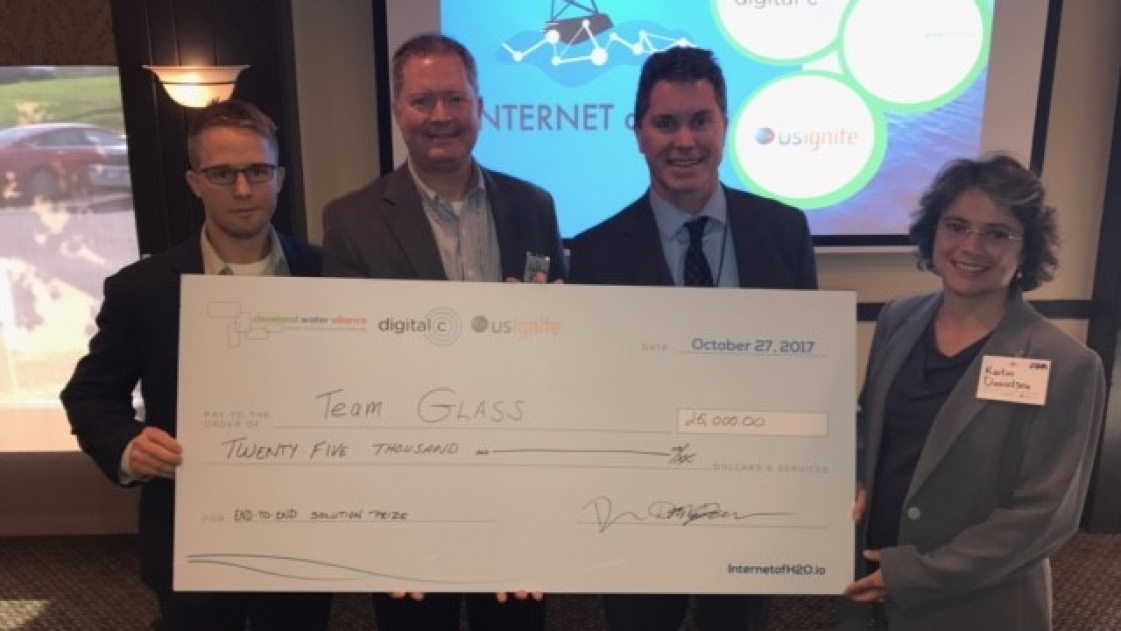Smart Technology Expands Water Quality Monitoring Capabilities

Water. Most North Americans take it for granted. Turn on the tap, and voila. But throughout the country, the quality of our water is being threatened by a tiny and surprisingly resilient enemy—algae. More specifically, a form of toxic algae that scientists call “harmful algal blooms” (or HABs). Smelly and slimy, often resembling the frothy top layer of your great aunt’s lime Jell-O salad, HABs can cause a range of potential problems to human health, the environment, and local economies. In one well-publicized example, unsafe levels of toxins (caused by HABs in Lake Erie) in Toledo’s water supply left close to half a million people without water in 2014, resulting in Ohio Governor John Kasich declaring a state of emergency.
And Ohio isn’t alone. According to the U.S. Environmental Protection Agency, harmful algal blooms reported in lakes, rivers, and reservoirs bearing nutrient-rich waters are one of the costliest and most challenging environmental problems facing our nation today. HABs develop when normal algae levels in water become too high. The root cause is generally nutrient loading—most often from agricultural runoff heavy with phosphorus and nitrogen.
Measuring and tracking nutrient levels in and entering surface water from tributaries is a critical component of understanding and predicting harmful algal blooms and targeting sources to improve water quality. However, solutions have historically been hampered by the absence of an affordable, real-time nutrient detection method.
Given the complexity of nutrient flows into the lake and how water flows and temperature affect HAB growth, it’s currently difficult for cities like Toledo to get warning of sudden increases in contaminants in surface water sources. But if given just a few hours of warning that the HAB would reach their intake pipes, they could adjust the treatment processes. To provide early warning of the nutrient flows that have the potential to cause HABs, we need to know what is happening as early in the chain of events as possible. That means measuring nutrient levels in the streams and rivers that flow into the lake.
In order to provide that early warning, OHM Advisors recently created the “Great Lakes Automated Sampling Solution and Evaluation System,” (or GLASSES) which is an end-to-end, field-ready monitoring solution proven to work. Plus, it’s affordable and scalable and it can work with a wide variety of already-existing technologies.
I’m happy to share a quick Q&A to share with our readers more about this new solution.
1. Why are harmful algal blooms such a problem?
Beside the fact that they have the potential to kill fish and cause sickness in humans and animals, ranging from skin irritation and flu-like symptoms to kidney failure, they require specialized treatment—including expensive retrofits to treatment plants that result in higher processing costs. These costs ultimately get passed along to the consumer. In addition, HABs can have an impact on a community’s bottom line—devastating to property values, tourism, and businesses that need fresh water sources to thrive.
2. What is GLASSES and how does it help solve the problem of HABs?
GLASSES is essentially a model for marrying several different types of technologies in order to enable real-time monitoring of nutrients or other types of substances. It integrates innovative detection methods, telemetry, and cloud-based analytics, all of which are automated, low-cost components that are already tested and exist on the market today.
For our initial test, we used water monitoring equipment provided by Green Eyes Science to collect data, telemetry units provided by HESCO to transmit the data, and a cloud-based analytics platform provided by H2Ometrics to present visual results in real time. The beauty is in how the pieces work together to feed data, every hour, to a cloud-based database. As a result, we get a density and frequency of data that we never had before. And that dramatically improves our ability to monitor water quality in real time.
3. How is this method different from the traditional approach to nutrient monitoring and detection and what does that mean for the field?
There are many challenges to monitoring nutrients that cause HABs in our country’s lakes and water systems, including the high cost of monitoring phosphorus and the lack of continuous data available to support real-time decision making. While monitoring the water quality of tributaries is not a new idea, the traditional techniques of performing monitoring have come with inherent limitations. Often times, monitoring programs have involved sending out a crew by vehicle to perform grab sampling or using composite samplers to collect samples, and then testing those samples in a lab. This method of monitoring naturally limits the frequency of sampling and the timeliness of turning samples into valuable information.
GLASSES helps solve some of these issues by enabling real-time monitoring and giving a more holistic view of what’s happening in the water. While there are many sensors out there that allow users to view data on a website, often times the individual data streams cannot be viewed simultaneously.
In the past, the techniques that have long been used for this are not up to the task, achieving at best just a snapshot of what was happening in the water. Sending out a crew in a vehicle to take samples, with those samples being tested in a lab, naturally limits how often data is collected, the density of that data, and how current it is. In many cases samples are taken once a week, from a few locations, and analysis of the samples can take days or weeks.
GLASSES delivers the whole story. The user-friendly visual platform allows us to see the big picture of what’s happening. This enables new levels of insight for more effective decision making. In other words, communities can now play a much more active role in identifying pollutant sources and possible solutions.
With early warning, the community may be able to shift to alternative water supplies, such as using excess capacity from an inland community that relies on groundwater. Or, they could fill up their storage tanks to capacity when the water is still usable, and then supply the community’s needs from the stored water until the HAB passes. Or, there may be processes available within their treatment plant that they don’t run all the time because of the cost, such as activated carbon. Turning on these processes temporarily may be enough to keep contaminants in their finished water within acceptable levels.
4. How do you know it works?
We demonstrated the readiness of GLASSES in a proof-of-concept deployment on Rock Creek, monitoring nutrient concentrations at the USGS gauging station. Rock Creek drains primarily agricultural land and is subject to flashy flows with dynamic loading rates of phosphorus, sediment, and other parameters important to the formation of HABs, making it an ideal location for testing new nutrient monitoring technologies. Plus, the National Center for Water Quality Research at Heidelberg University has an ongoing nutrient monitoring program at the Rock Creek site. So, we were able to validate our data with a highly reputable and independent laboratory. The results showed excellent agreement between the two data sets.
5. But could it work with similar technologies from other manufacturers, or be used for other applications?
Absolutely. GLASSES can work with any collection of monitoring equipment, telemetry, and analytics software. The individual components can flex to fit a client’s needs, budget, and situation. More than that, it has broader applications than nutrient monitoring. Right now, it is being used to perform residual chlorine (TRC) monitoring for a large treatment facility off the shores of the Great Lakes in an effort to enhance operations and optimize treatment processes.
6. Can you provide a few real-world examples of how GLASSES might be used in the immediate future?
It’s possible to implement a full-scale monitoring network that can identify nutrient hot spots throughout a watershed, guide management programs to target those sources, and monitor the success of implemented nutrient reduction solutions. And, because the technology is affordable, it makes regional source tracking a reality. GLASSES has the potential to identify the levels of phosphorus from multiple sources, providing the necessary information to focus on the largest sources first. Communities can keep nutrients from feeding HABs by evaluating best management processes and funding those that deliver results.
7. So, what’s next for smart water quality monitoring at OHM Advisors?
We’re currently developing a “smart” kayak to identify water quality issues in rivers and lakes. The idea is to mount water quality monitoring probes on a kayak equipped with GPS positioning and a 360o GoPro camera. The kayak will detect chemical or bacterial contamination as it travels. We will then mark the locations where contamination was detected, collect samples, and take 360o photos to identify the source. Communities can use this tool to quickly and affordably monitor natural waterways for illegal discharges, leaking sewers, and nutrient-laden stormwater runoff.


